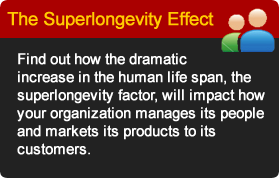WEAK US ECONOMY SLOWING BIRTHS, MARRIAGE, HOMEOWNERSHIP
WEAK US ECONOMY SLOWING BIRTHS, MARRIAGE, HOMEOWNERSHIP
April 6, 20129:56 AM MST
For Many, The American Dream Seems Unattainable
http://www.google.com/imgres?start=103&hl=en&safe=off&gbv=2&biw=929&bih=596&addh
=36&tbm=isch&tbnid=1jLo_rRxXJ3XIM:&imgrefurl=http://www.justfunditmortgage.com/Home&docid=VWzjutqHoCzNfM&imgurl=http://www.justfunditmortgage.com/xSites/Mortgage/justf
The disappointing March 2012 jobs numbers remind us that the USeconomy continues to struggle.
The Bureau of Labor Statistics reports that only 120,000 jobs were created last month, and thousands of discouraged workers have simply dropped out of the labor force. Fewer Americans are working today than were employed in 2000 even as our population has grown by 30 million people. According to the Gallup organization, nearly 1 out of 5 Americans is either unemployed or working part time while desiring full time employment.
In 2011 the economy expanded by an extremely weak 1.7%, and will be lucky to grow at a 2% pace this year. Gas now averages $4 a gallon, and could reach $5 by the summer. The real inflation rate, as measured by the EPI (Everyday Price Index), stands close to 8%. New home sales are at historical lows. Millions of Americans have seen their net worth shrink
as housing prices have declined. A Wall Street Journal article described this recovery as the weakest on record, including the years directly following the depths of the Depression.
Most recessions since the end of WWII have been relatively short, lasting 6-12 months. As a result, their long term effects on society and the economy have been minimal.
Unfortunately, this current contraction has been so deep and so long-lasting that its impact is being felt throughout American society.
The economy has become a drag on population growth. Starting in 2009, the US population has grown by only 0.7% a year, down from annual increases of around % in previous years. This is the lowest rate of increase since the Great Depression. The US fertility rate is declining as well. That measure now stands at 1.9 children per female ages 18-64, below the replacement rate of 2.1.
When a country’s fertility rate stays significantly below replacement levels its population eventually shrinks. America seems to be following in the footsteps of Italy, Spain, Portugal, Ireland and other low-birth countries who must increasingly depend on imported often poorly- skilled labor to keep their societies functioning. A shrinking population base also means there are fewer younger workers to contribute to America’s already burgeoning safety net, including Social Security and Medicare.
Population Reference Bureau demographer Carl Haub linked these demographic changes to the weak economy. He stated that ”Almost anybody who observes these things over the years can say this is almost all recession-related."
The reasons for such declines can be traced to the changing life choices the nation’s younger people are making as they adjust to difficult economic conditions. Quite simply, the Great Recession has made it difficult for many young Americans to get married, buy a home, and raise families.
According to the Gallup organization, as of the end of 2011 44% of 18-to-29-year-olds classified as part of the labor force were unemployed or underemployed. The census bureau said that between 2008 and 2010 householders under age 25 saw their median income fall by 13 percent after adjusting for inflation. The 25-to-29 group’s income fell five percent during the same period.
Poor job prospects are forcing many under the age of 30 to postpone marriage.. 64% of men aged 25 to 29 were still single in 2011, up from 59 percent in 2008. Women in the never-married group grew from 45% to 50% in that same short period. Overall, marriages dropped 5% between 2009 and 2010.
The weak economy also has made it difficult for the younger generation to afford homes. Among the 30-34 age group, home ownership has dropped below 50% for the first time in recent memory. It is also forcing many to abandon the dream of a house in the suburbs and staying put in crowded urban areas.
Burdened by college loans, young people are having difficulty getting their lives started. For the first time, Americans owe more in student debt than they do in credit-card debt. Two-thirds of college graduates carry some debt at commencement. The Class of 2010 graduates owed on average $25,250, up 5 percent from the previous year. As a result, Americans now owe the Federal and private lenders nearly $1 trillion.
Worse, our often unemployed or underemployed graduates are struggling to repay these loans. Two-year default rates on all student loans hit 8.8 percent for those starting repayment in 2009, with 15 percent defaulting at for-profit institutions.
Young workers who default on such loans will be saddled with poor credit ratings that will reduce their chances of getting a home mortgage later on. This is bad news for boomers who were hoping to sell their homes, pocket the income, and retire. They might have to wait some time before the new generation of prospective home buyers can actually afford a new home.
Americans assume the “pursuit of happiness” is an unalienable right. Many include in their definition of happiness the opportunity to marry, raise children, and eventually own property. Unfortunately, this weak economy is preventing many Americans from participating in the American Dream.
In order to insure Americans’ opportunity to pursue their happiness, the US must first and foremost get its economy in order. But that will only happen when the country’s leaders discard the fanciful notion that US economy is now undergoing a significant recovery.
A whopping 66% of Americans think the US is still in the throes of a recession. Perhaps the country’s leaders should ask them why.
DR. ZEY'S PRESENTATION TOPICS



